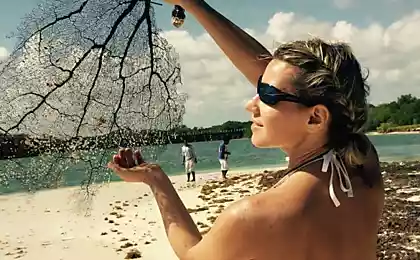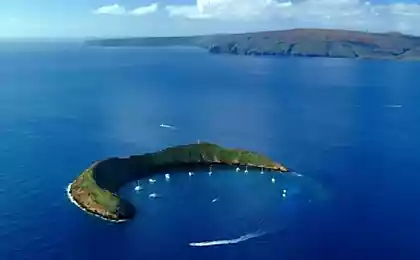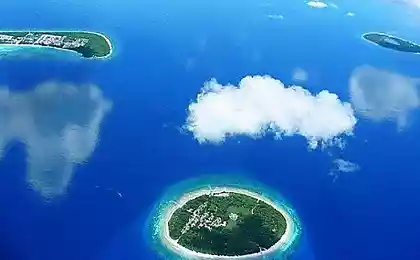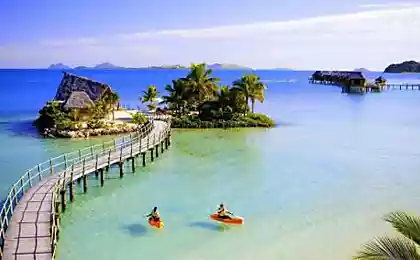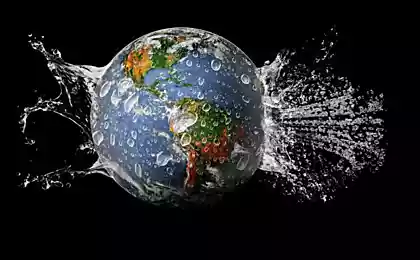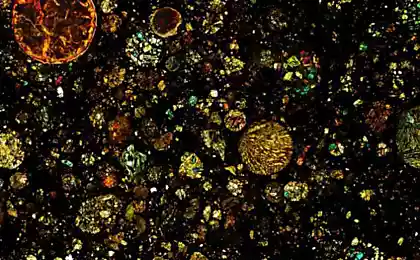1029
Nukuoro Atoll
Our land has countless pearls - and here it is another ...
Ring oceanic coral islands - atolls - are likely to become the first victims of global warming and rising sea levels as it is an inevitable consequence. In the picture, taken from the International Space Station May 31, 2006, chronicled Nukuoro Atoll (Nukuoro), which is part of the Caroline Islands, lying in the western Pacific Ocean, and is part of the Federated States of Micronesia. Its geographic coordinates - 3.85 ° N, 154.9 ° E, the average diameter - about 6 km. On the island it resides about 900 people (the population average trehpodezdnogo 16-storey building). They have their own unique language, are mainly engaged in fishing, cultivation of taro and coconuts. Nukuoro is associated with civilization only irregular maritime traffic - not even on the island runway.

Nukuoro Atoll - one of the 607 islands that make up the Federated States of Micronesia.
Atolls arise from remnants of coral polyps, which for thousands of years slowly grow over the islands disappearing into the depths of volcanic origin. These organisms form the skeleton of calcium carbonate (limestone) isolated them from the ocean water - from the same mineral is mainly composed and coral islands. They feed mainly coral algae and small marine organisms, lifestyles are fixed once and for all having attached to the bottom or lime structures formed by their previous generations. In this way, for many years one of the polyp can form spherical colony of genetically identical organisms, spin-offs from the "ancestor" - so-called "coral head", an impressive example of which is seen as a round bright spot near the center of the lagoon.
Nukuoro Atoll - a true "haven" for lovers of solitude. One of the outer atolls of Pohnpei, it includes 42 tiny islands, formed almost a perfect circle around the lagoon with a diameter of 6 kilometers. Polynesian atoll residents are friendly, making it a great place to relax, or to spend some time doing just walking around the shore, looking for seashells and games with the children of the island. There is a small guest house is right on the pier. No airport and passenger ship comes only once a month.
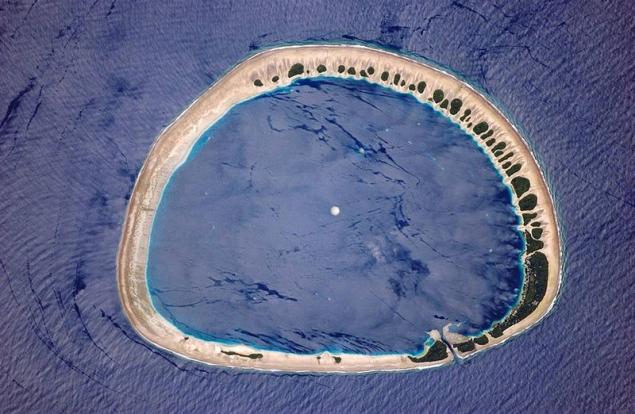
The equatorial and sub-equatorial. The temperature is kept all year round near the mark of 27 C. Rainfall is 2250 mm. up to 3000-6000 mm. (in the mountains on the island of Kusape) a year. The most humid month - April. Pacific where the Micronesia, is the area of origin of typhoons (on average there are about 25 typhoons a year). The typhoon season - from August to December. For tourist visits up to 30 days visa is not required. It is worth noting that the 30-day period begins to count anew each time a tourist moved to another island group.
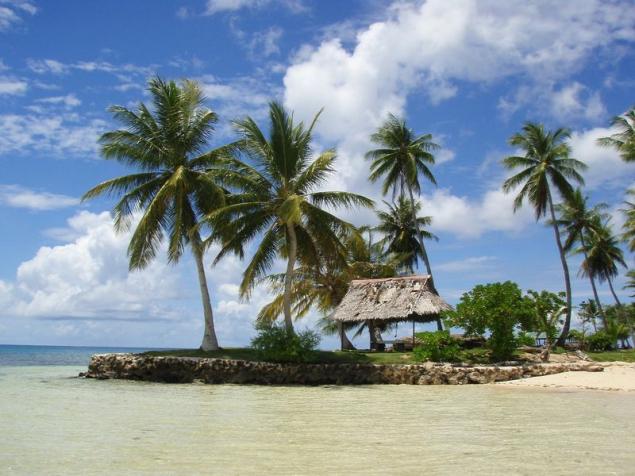
Source: bloggmaster.livejournal.com
Ring oceanic coral islands - atolls - are likely to become the first victims of global warming and rising sea levels as it is an inevitable consequence. In the picture, taken from the International Space Station May 31, 2006, chronicled Nukuoro Atoll (Nukuoro), which is part of the Caroline Islands, lying in the western Pacific Ocean, and is part of the Federated States of Micronesia. Its geographic coordinates - 3.85 ° N, 154.9 ° E, the average diameter - about 6 km. On the island it resides about 900 people (the population average trehpodezdnogo 16-storey building). They have their own unique language, are mainly engaged in fishing, cultivation of taro and coconuts. Nukuoro is associated with civilization only irregular maritime traffic - not even on the island runway.

Nukuoro Atoll - one of the 607 islands that make up the Federated States of Micronesia.
Atolls arise from remnants of coral polyps, which for thousands of years slowly grow over the islands disappearing into the depths of volcanic origin. These organisms form the skeleton of calcium carbonate (limestone) isolated them from the ocean water - from the same mineral is mainly composed and coral islands. They feed mainly coral algae and small marine organisms, lifestyles are fixed once and for all having attached to the bottom or lime structures formed by their previous generations. In this way, for many years one of the polyp can form spherical colony of genetically identical organisms, spin-offs from the "ancestor" - so-called "coral head", an impressive example of which is seen as a round bright spot near the center of the lagoon.
Nukuoro Atoll - a true "haven" for lovers of solitude. One of the outer atolls of Pohnpei, it includes 42 tiny islands, formed almost a perfect circle around the lagoon with a diameter of 6 kilometers. Polynesian atoll residents are friendly, making it a great place to relax, or to spend some time doing just walking around the shore, looking for seashells and games with the children of the island. There is a small guest house is right on the pier. No airport and passenger ship comes only once a month.

The equatorial and sub-equatorial. The temperature is kept all year round near the mark of 27 C. Rainfall is 2250 mm. up to 3000-6000 mm. (in the mountains on the island of Kusape) a year. The most humid month - April. Pacific where the Micronesia, is the area of origin of typhoons (on average there are about 25 typhoons a year). The typhoon season - from August to December. For tourist visits up to 30 days visa is not required. It is worth noting that the 30-day period begins to count anew each time a tourist moved to another island group.

Source: bloggmaster.livejournal.com
